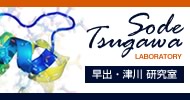Team:Tokyo-NoKoGen/Project/rhodopsin
From 2012.igem.org
(Difference between revisions)
(Created page with "{{Template:Team:Tokyo-NoKoGen/contents_header}} {{Template:Team:Tokyo-NoKoGen/index_project}} <html> </html> {{Template:Team:Tokyo-NoKoGen/contents_footer}}") |
|||
| Line 2: | Line 2: | ||
{{Template:Team:Tokyo-NoKoGen/index_project}} | {{Template:Team:Tokyo-NoKoGen/index_project}} | ||
<html> | <html> | ||
| + | |||
| + | <BR> | ||
| + | <BR> | ||
| + | <font size=32>Sensory rhodopsin</font> | ||
| + | <BR> | ||
| + | <BR> | ||
| + | <B>Background</b> | ||
| + | <BR> | ||
| + | Halophilic archaea, such as Halobacterium salinarum and Natronobacterium pharaonis show phototaxis by responding to changes in light color and intensity using receptors called sensory rhodopsin I and II (SRI and SRII). The SR proteins are seven-transmembrane retinylidene photoreceptors, which transmits blue light signal (λmax 487 nm) to their corresponding transducers HtrI and HtrII respectively. signals to Htr proteins via helix-helix interaction. Htr proteins consist of two transmembrane helices and cytoplasmic methyl-accepting and His-Kinase domains, and belongs to histidine kinase / phosphoreregulator two-component system for regulating cells’ flagellar motors for phototaxis. | ||
| + | |||
| + | |||
</html> | </html> | ||
{{Template:Team:Tokyo-NoKoGen/contents_footer}} | {{Template:Team:Tokyo-NoKoGen/contents_footer}} | ||
Revision as of 06:51, 21 September 2012
- overview
- lux operon
- rhodopsin
- modelling
- Future work
- project
Sensory rhodopsin
Background
Halophilic archaea, such as Halobacterium salinarum and Natronobacterium pharaonis show phototaxis by responding to changes in light color and intensity using receptors called sensory rhodopsin I and II (SRI and SRII). The SR proteins are seven-transmembrane retinylidene photoreceptors, which transmits blue light signal (λmax 487 nm) to their corresponding transducers HtrI and HtrII respectively. signals to Htr proteins via helix-helix interaction. Htr proteins consist of two transmembrane helices and cytoplasmic methyl-accepting and His-Kinase domains, and belongs to histidine kinase / phosphoreregulator two-component system for regulating cells’ flagellar motors for phototaxis.
 "
"





